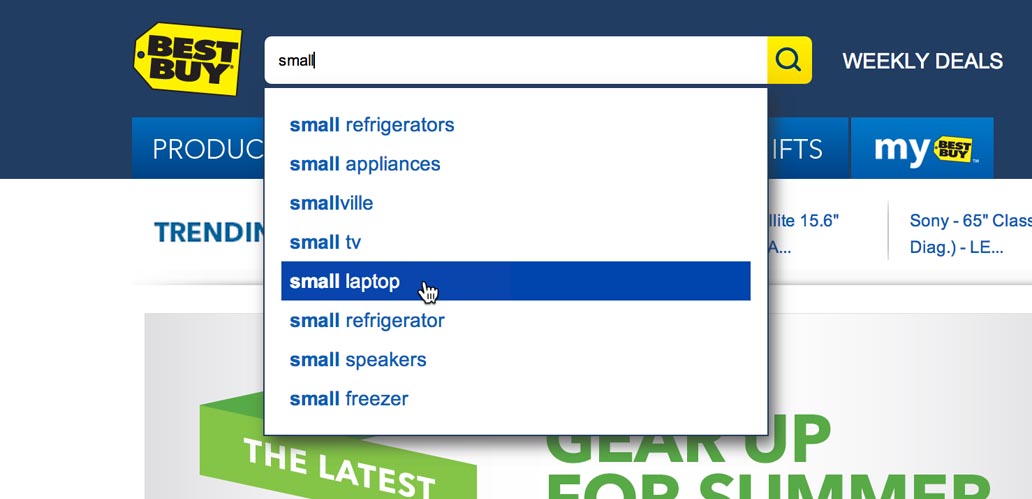When e-commerce search works, it can feel almost magical: you simply type in what you’re looking for and it’s served up in mere milliseconds. It’s fast, convenient, and super efficient – no wonder so many users prefer search over clicking around the site’s categories! Unfortunately, e-commerce search often doesn’t work that well…
In Baymard Institute’s 4th large-scale usability study, we have researched the user’s search experience in an e-commerce context. And the results were not pretty. In fact, after months of user testing and benchmarking of the 50 top grossing e-commerce sites in the US, we’re tempted to declare the current state of e-commerce search for “broken”, with only a handful of sites delivering what may be considered just a decent search experience.
This is despite the stakes of e-commerce search being exceptionally high: After all, if users can’t find the product they’re searching for, they can’t buy it. This not only leads to lost sales here and now, it also makes users less likely to return in the future as they obviously won’t go to a store they don’t expect to carry the product they are interested in.
During the study, the test subjects were observed to rely heavily on e-commerce search queries that included a theme, feature, relation, or symptom – yet most of 19 tested sites had poor support for these query types. Even among the 50 benchmarked e-commerce giants, a meager 34% support these query types. And that’s only counting 4 of the 12 essential search query types identified during testing.
In fact, search support was so poor that 31% of all product finding tasks ended in vain when the test subjects tried using search. Indeed, among the top 50 e-commerce sites, a whopping 70% of the search engines are unable to return relevant results for product type synonyms – requiring users to search using the exact same jargon as the site – while 34% of the sites don’t return useful results when users search for a model number or misspell just a single character in the product title.
However, it isn’t just the engines of search that are vital to the user’s search experience. During usability testing, the search interface proved almost as important to the subjects’ ability to find relevant products. Proper design of the search field, autocomplete suggestions, and the search results page will, in other words, win you half the battle. Which is why more than half of the guidelines in the usability report are about how to design a great search interface – guidelines which can typically be implemented with simple and focused UI tweaks.
The e-commerce search report and benchmark are fully integrated and therefore come bundled together. The 286-page report outlines 60 guidelines on e-commerce search usability and the benchmark database includes reviews of 50 major e-commerce sites, with the two covering everything from search engine logic to interface design. This toolset will help you optimize the engines and interface of your e-commerce search so that your users can always find the products they are looking for.
Learn more and get access to the E-Commerce Search Usability report and benchmark today.




